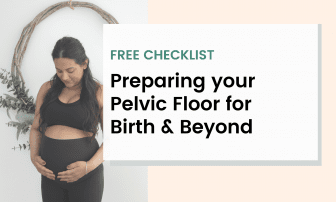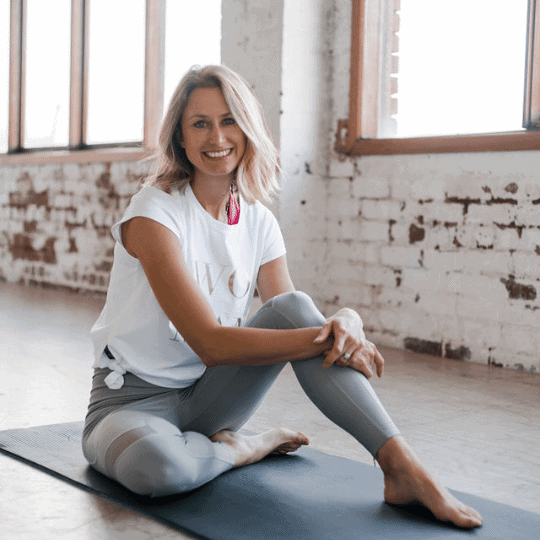Podcast Episode #223
Simone Holtznagel
In this episode I chat with Simone Holtznagel, who shares her pregnancy journey, birth story and recovery journey, with baby Gia being born at the end of March.
Simone Holtznagel is one of Australia’s media personalities, and has appeared in shows such as ‘Australia’s Next Top Model’ and ‘I’m A Celebrity Get Me Out Of Here’.
In today’s podcast episode, Simone opens up about her birth preparation, describes what she would have done differently with her birth preparation (hint, it’s to do with her pelvic floor!).
Simone also describes her vaginal birth including use of epidural, and she also shares what she did with her placenta, including placental encapsulation and a placenta smoothie!

In this article you'll find tips to:
- Prepare for Pregnancy and Birth
- Navigate the Birth Process
- Enhance Postpartum Recovery
- Support Breastfeeding and Early Motherhood
- Consider Alternative Postpartum Practices

Simone Holtznagel’s Background
Simone Holtznagel is a well-known Australian media personality, recognised for her appearances on popular shows like “Australia’s Next Top Model” and “I’m a Celebrity… Get Me Out of Here!”. Recently, she embarked on a new journey into motherhood with the birth of her baby girl, Gia, who is now six weeks old. In this podcast episode, Simone shared her candid and insightful experiences from pregnancy to early motherhood, also providing valuable tips and reflections for other mums-to-be.
Simone Holtznagel’s Pregnancy Journey
Simone discovered she was pregnant shortly after a holiday celebrating her 30th birthday. Reflecting on her early pregnancy, she recounted initial symptoms and the cautious approach her doctors took during those first few weeks. Despite feeling nervous and anxious, especially with slight spotting and fatigue, Simone navigated her pregnancy with a mixture of excitement and careful preparation.
Simone Holtznagel’s Birth Story
Preparation was key for Simone as she read extensively, attended birthing classes, and performed perineal massage to get ready for childbirth. Her birth story includes opting for an epidural and having a vaginal delivery with the assistance of forceps after two hours of pushing. Simone’s experience highlights the importance of learning effective pushing techniques, something she wished she had focused on more.
Simone managed to avoid an episiotomy and only required a minor internal stitch, which was a significant relief. Her story underscores the unpredictable nature of childbirth and the value of being adaptable.
Simone Holtznagel’s Recovery Journey
Postpartum recovery brought its own set of challenges for Simone. She experienced neuropraxia of the femoral nerve due to her legs being in stirrups during labour, which temporarily affected her knee reflexes and strength. Simone emphasised the importance of pelvic floor physiotherapy, which aided her recovery significantly. She also shared her success in breastfeeding, despite a brief encounter with mastitis.
Simone’s relaxed approach to early motherhood, coupled with her proactive steps in recovery, illustrates her resilience and adaptability. She encourages other new mums to embrace the journey, despite its hurdles, and to seek professional support when needed.
Placental Encapsulation and Smoothie – Simone’s Experience
One of the unique aspects of Simone’s postpartum journey was her decision to encapsulate her placenta and consume part of it in a smoothie. Simone had always been interested in alternative and holistic health practices and saw potential benefits in this approach. After careful research, she had her placenta made into capsules and a smoothie, believing it helped prevent postpartum depression and accelerated her recovery.
Simone reported that she stopped bleeding within seven days postpartum and felt an overall sense of well-being, attributing part of this to her placental consumption. While acknowledging the controversy and lack of extensive scientific backing for placental encapsulation, Simone advocates for making informed, personal choices that feel right for each individual.
In sharing her story, Simone Holtznagel provides a wealth of insights and practical advice for expecting and new mums. Her candid reflections offer reassurance and encouragement, emphasising the importance of preparation, self-care, and flexibility in the journey of motherhood.
** This podcast has general information only. Always seek the guidance of your doctor or other qualified health professional with any questions or concerns you may have regarding your health or medical condition.
Links
Simone’s Instagram: @simoneholtznagel
Preparing for birth Pelvic health checklist
Free 7 Day Trial Pregnancy Workouts
Free 7 Day Trial Postnatal Workouts
FitNest Mama Website
Instagram @fitnestmama


